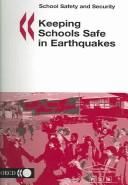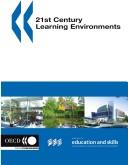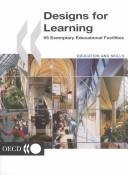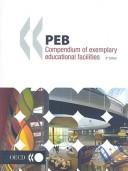| Listing 1 - 10 of 11 | << page >> |
Sort by
|

ISBN: 1280171693 9786610171699 9264016708 9264016694 Year: 2004 Publisher: Paris : OECD Publishing,
Abstract | Keywords | Export | Availability | Bookmark
 Loading...
Loading...Choose an application
- Reference Manager
- EndNote
- RefWorks (Direct export to RefWorks)
Earthquake-prone communities need earthquake-resistant schools. In 2002, a primary school in San Giuliano, Italy, collapsed killing 29 children and one teacher. In May 2003, a medium-sized earthquake in the city of Bingöl, Turkey, caused the collapse of three new schools and a dormitory, killing many children as they slept. All too frequently, earthquakes cause the collapse of school buildings and the injury and death of staff and students. Further, when schools are closed because of earthquake damage, education is hampered, community life disrupted, and potential emergency shelters unavailable. Where school attendance is compulsory, communities have an obligation to provide a safe study and work environment. Why do schools collapse even during moderate earthquakes? Experts agree that many collapse due to avoidable errors in design and construction. Often, the needed technology is not applied and laws and regulations are not sufficiently enforced. Application of existing knowledge can significantly lower the seismic risk of schools and help prevent further injury and death of school occupants during earthquakes. Moreover, this can be accomplished at reasonable cost and within a reasonable period. Keeping Schools Safe in Earthquakes presents expert knowledge, opinions and experiences, and provides valuable insight into the scope of problems involved in protecting schools and their occupants. Its recommendations are a call to action to all governments in OECD and partner countries to help facilitate their implementation.
Earthquake resistant design -- Cross-cultural studies. --- Earthquake resistant design. --- School buildings -- Design and construction -- Cross-cultural studies. --- School buildings -- Design and construction. --- School buildings -- Earthquake effects -- Cross-cultural studies. --- School buildings -- Earthquake effects. --- School buildings --- Design and construction --- Buildings, School --- School architecture --- School-houses --- Schoolhouses --- Public buildings --- School facilities

ISBN: 1280606525 9786610606528 9264006508 9264006486 Year: 2006 Publisher: Paris : OECD,
Abstract | Keywords | Export | Availability | Bookmark
 Loading...
Loading...Choose an application
- Reference Manager
- EndNote
- RefWorks (Direct export to RefWorks)
Drawing on material presented at the OECD Programme on Educational Building's conference in London on "Creating 21st Century Learning Environments," this richly illustrated book presents the latest in innovative design for schools and analyses needs for the future. It does this through a series of thematic analyses, presentations, and school visits. The conclusions summarize planning and construction issues and make suggestions for the construction industry.
School buildings. --- School buildings --- School environment --- Design and construction --- Planning --- Buildings, School --- School architecture --- School-houses --- Schoolhouses --- Environment, School --- Public buildings --- School facilities --- Educational sociology --- 2.
Book
ISBN: 0821387081 Year: 2011 Publisher: Washington, D.C. : Banque Mondiale (World Bank),
Abstract | Keywords | Export | Availability | Bookmark
 Loading...
Loading...Choose an application
- Reference Manager
- EndNote
- RefWorks (Direct export to RefWorks)
Community organization --- Education --- Education, Primary --- Rural development projects --- School buildings --- Parent participation --- Aims and objectives --- Design and construction.
Book
ISBN: 1283319780 9786613319784 9264112308 9264112294 Year: 2011 Publisher: Paris : OECD,
Abstract | Keywords | Export | Availability | Bookmark
 Loading...
Loading...Choose an application
- Reference Manager
- EndNote
- RefWorks (Direct export to RefWorks)
Designing for Education: Compendium of Exemplary Educational Facilities 2011 showcases over 60 recently built or refurbished educational facilities from 28 countries. Collectively, these projects demonstrate state-of-the-art design in this field and each one is lavishly illustrated with colour photos, plans and descriptions. The individual chapters – which are in higher resolution format – are available on the OECD iLibrary.
School buildings -- Design and construction. --- School buildings -- Designs and plans. --- School environment. --- School facilities -- Design and construction. --- School buildings --- School facilities --- School environment --- Education --- Social Sciences --- Theory & Practice of Education --- Design and construction --- Design and construction. --- Environment, School --- Educational facilities --- Public school facilities --- School plants --- Buildings, School --- School architecture --- School-houses --- Schoolhouses --- Educational sociology --- Instructional systems --- Public buildings
Book
ISBN: 9264286136 9264292500 9789264286139 Year: 2000 Publisher: Paris : OCDE,
Abstract | Keywords | Export | Availability | Bookmark
 Loading...
Loading...Choose an application
- Reference Manager
- EndNote
- RefWorks (Direct export to RefWorks)
Cet ouvrage est une compilation consacrée à des bâtiments scolaires et universitaires d’exception représentant 21 pays. Photographies en quadrichromie et textes descriptifs illustrent 55 établissements sélectionnés par un jury international pour la qualité de leur adaptation à un environnement qui est en constante évolution tant du point de vue de l'enseignement que de celui de l’apprentissage. Les lecteurs y trouveront également un panorama des activités menées par le Programme de l’OCDE pour la construction et l’équipement de l’éducation (PEB) autour de l’apprentissage tout au long de la vie, en collaboration avec d’autres organismes spécialisés dans la formation, la recherche et la gestion des ressources.
Architecture and children --- Architecture and youth --- School buildings --- Education --- Architecture et enfants --- Architecture et jeunesse --- Constructions scolaires --- Design and construction --- Conception et construction --- Bâtiment scolaire

ISBN: 128008071X 9786610080717 9264192506 9264186131 Year: 2001 Publisher: Paris : OECD Publishing,
Abstract | Keywords | Export | Availability | Bookmark
 Loading...
Loading...Choose an application
- Reference Manager
- EndNote
- RefWorks (Direct export to RefWorks)
This book is a compilation devoted to high quality school and university buildings from 21 countries. Full-colour photographs and plans illustrate the 55 educational facilities selected by an international jury in recognition of their forward-looking response to the changing environment of teaching and learning. Readers will also find an overview of activities of the OECD Programme on Educational Building in the context of lifelong learning, carried out in collaboration with other organisations specialised in teaching, research and resource management.
Education. --- School buildings --- Education --- Social Sciences --- Theory & Practice of Education --- Buildings, School --- School architecture --- School-houses --- Schoolhouses --- Public buildings --- School facilities

ISBN: 9264022295 9786610606825 1280606827 9264014926 Year: 2006 Publisher: [Paris] : OECD,
Abstract | Keywords | Export | Availability | Bookmark
 Loading...
Loading...Choose an application
- Reference Manager
- EndNote
- RefWorks (Direct export to RefWorks)
This third PEB Compendium features educational institutions from 20 countries selected by an international jury for their exemplary facilities. This work shows how the design, use and management of physical infrastructure can contribute to the quality of education. With full-colour photographs, plans and descriptions, the Compendium focuses on the functionality of 65 recently completed or refurbished buildings or grounds, chosen for their innovation in the areas of safety, sustainability, alternative financing, community and flexibility. In addition to schools and universities, this third edition of the PEB Compendium covers pre-schools and gives special attention to how effectively the facilities meet the needs of their users: students, teachers, parents and the community at large.
Teaching aids --- niveau-onderwijs --- facility management --- openbare gebouwen --- gebruikersonderzoek --- onderwijs --- ontwerpen --- kwaliteit --- schoolgebouwen --- School buildings. --- School buildings --- School facilities. --- School facilities --- 718.5 --- Schoolarchitectuur --- Schoolgebouwen --- Buildings, School --- School architecture --- School-houses --- Schoolhouses --- Public buildings --- Educational facilities --- Public school facilities --- School plants --- Instructional systems

ISBN: 9789264016705 9789264016699 9264063544 926404910X Year: 2008 Publisher: Beijing : China Development Research Foundation,
Abstract | Keywords | Export | Availability | Bookmark
 Loading...
Loading...Choose an application
- Reference Manager
- EndNote
- RefWorks (Direct export to RefWorks)
Earthquake-prone communities need earthquake-resistant schools. In 2002, a primary school in San Giuliano, Italy, collapsed killing 29 children and one teacher. In May 2003, a medium-sized earthquake in the city of Bingöl, Turkey, caused the collapse of three new schools and a dormitory, killing many children as they slept. All too frequently, earthquakes cause the collapse of school buildings and the injury and death of staff and students. Further, when schools are closed because of earthquake damage, education is hampered, community life disrupted, and potential emergency shelters unavailable. Where school attendance is compulsory, communities have an obligation to provide a safe study and work environment. Why do schools collapse even during moderate earthquakes? Experts agree that many collapse due to avoidable errors in design and construction. Often, the needed technology is not applied and laws and regulations are not sufficiently enforced. Application of existing knowledge can significantly lower the seismic risk of schools and help prevent further injury and death of school occupants during earthquakes. Moreover, this can be accomplished at reasonable cost and within a reasonable period. Keeping Schools Safe in Earthquakes presents expert knowledge, opinions and experiences, and provides valuable insight into the scope of problems involved in protecting schools and their occupants. Its recommendations are a call to action to all governments in OECD and partner countries to help facilitate their implementation
Teaching aids --- School buildings --- Education --- Children --- Education, Primitive --- Education of children --- Human resource development --- Instruction --- Pedagogy --- Schooling --- Students --- Youth --- Civilization --- Learning and scholarship --- Mental discipline --- Schools --- Teaching --- Training --- Buildings, School --- School architecture --- School-houses --- Schoolhouses --- Public buildings --- School facilities
Book
ISBN: 9780821377208 0821377205 9780821377215 0821377213 1282136259 9786612184017 9786612136252 Year: 2008 Publisher: World Bank : Washington, DC,
Abstract | Keywords | Export | Availability | Bookmark
 Loading...
Loading...Choose an application
- Reference Manager
- EndNote
- RefWorks (Direct export to RefWorks)
School Construction Strategies for Universal Primary Education in Africa' examines the scope of the infrastructure challenge in Sub-Saharan Africa and the constraints to scaling up at an affordable cost. It assesses the experiences of African countries with school planning, school facility designs, and construction techniques, procurement and implementation arrangements over the past thirty years. It reviews the roles of the various actors in the implementation process : central and deconcentrated administrations, local governments, agencies, social funds, NGOs, and local communities. Drawing
School buildings --- School facilities --- Education, Primary --- Educational facilities --- Public school facilities --- School plants --- Education (Primary) --- Children --- Primary education --- Early childhood education --- Instructional systems --- Buildings, School --- School architecture --- School-houses --- Schoolhouses --- Public buildings --- Community organization --- Education --- Rural development projects --- Parent participation --- Aims and objectives --- Design and construction
Book
ISBN: 9781501705892 150170589X 1501706446 9781501704475 1501704478 9781501706448 Year: 2016 Publisher: Ithaca, NY
Abstract | Keywords | Export | Availability | Bookmark
 Loading...
Loading...Choose an application
- Reference Manager
- EndNote
- RefWorks (Direct export to RefWorks)
Worker centers are becoming an important element in labor and community organizing and the struggle for fair pay and decent working conditions for low-wage workers, especially immigrants. There are currently more than two hundred worker centers in the country, and more start every month. Most of these centers struggle as they try to raise funds, maintain stable staff, and build a membership base. For this book, Kim Bobo and Marién Casillas Pabellón, two women with extensive experience supporting and leading worker centers, have interviewed staff at a broad range of worker centers with the goal of helping others understand how to start and build their organizations. This book is not theoretical, but rather is designed to be a practical workbook for staff, boards, and supporters of worker centers.Geared toward groups that want to build worker centers, this book discusses how to survey the community, take on an initial campaign, recruit leaders, and raise seed funds. Bobo and Casillas Pabellón also provide a wealth of advice to help existing centers become stronger and more effective. The Worker Center Handbook compiles best practices from around the country on partnering with labor, enlisting the assistance of faith communities and lawyers, raising funds, developing a serious membership program, integrating civic engagement work, and running major campaigns. The authors urge center leaders to both organize and build strong administrative systems. Full of concrete examples from worker centers around the country, the handbook is practical and honest about challenges and opportunities.
E-books --- Community centers --- Labor unions --- Labor movement --- Organizing --- Labor and laboring classes --- Social movements --- Industrial unions --- Labor, Organized --- Labor organizations --- Organized labor --- Trade-unions --- Unions, Labor --- Unions, Trade --- Working-men's associations --- Societies --- Central labor councils --- Guilds --- Syndicalism --- Community learning centers --- Learning centers, Community --- Learning centers, School-based --- Play centers --- School-based learning centers --- School buildings --- Schools as social centers --- Social centers --- Public buildings --- Social settlements --- Sports facilities --- Playgrounds --- Recreation --- School facilities --- Community use --- Extended use
| Listing 1 - 10 of 11 | << page >> |
Sort by
|

 Search
Search Feedback
Feedback About UniCat
About UniCat  Help
Help News
News